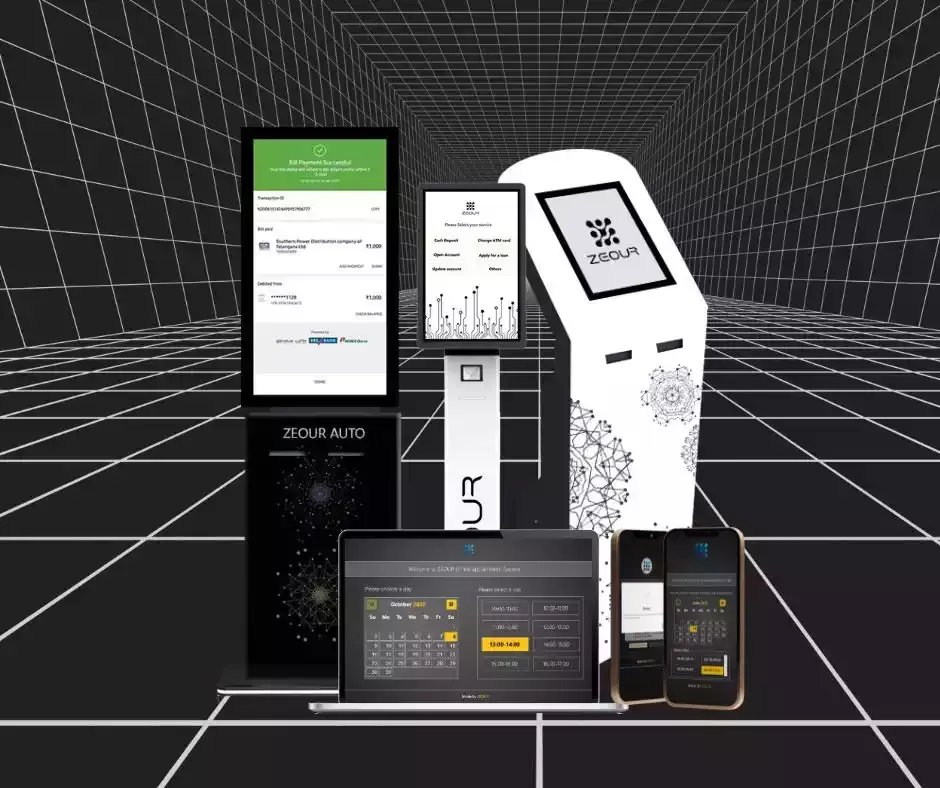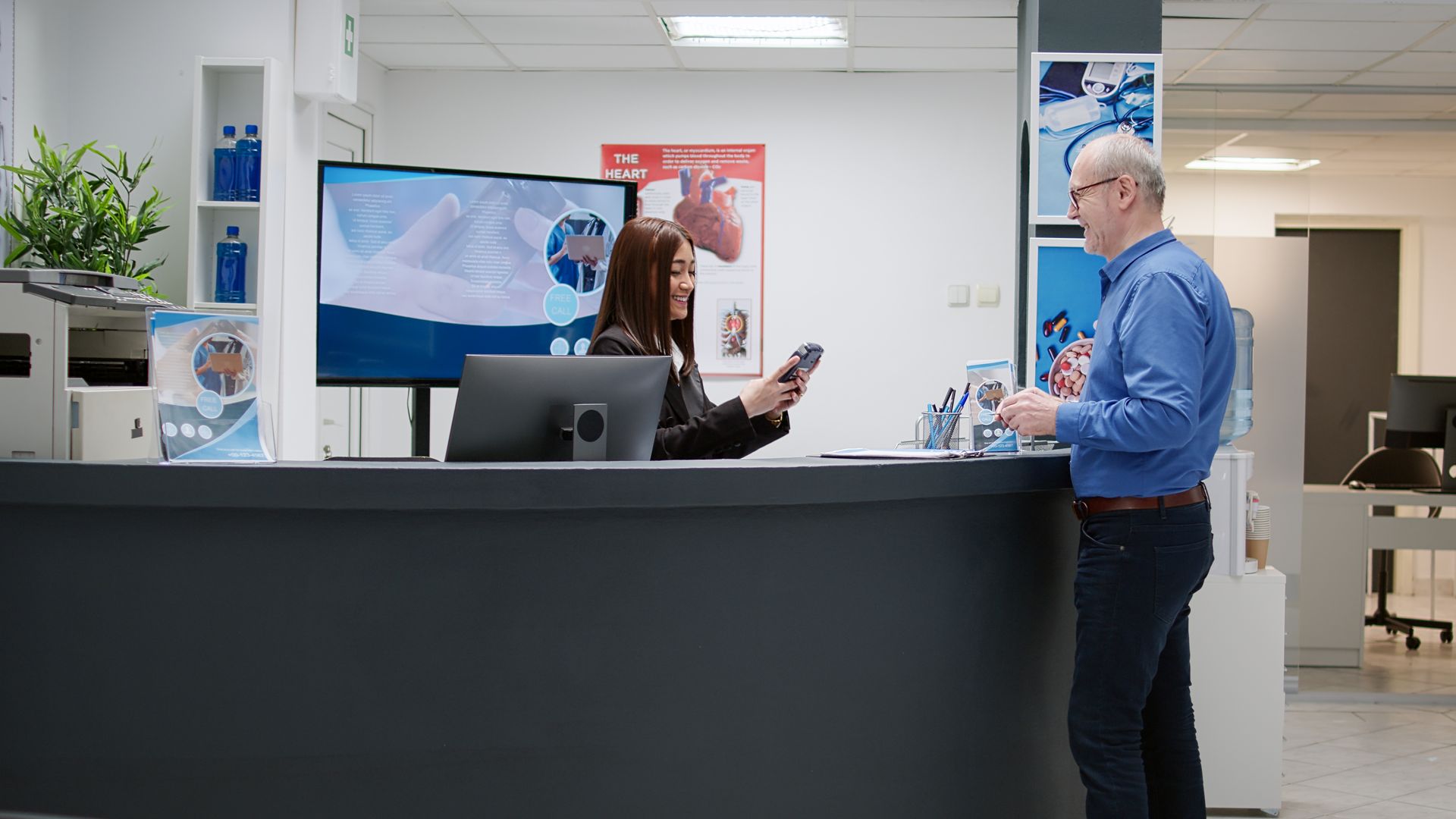From Entry To Exit, Use a Queue Management System To Redefine Bank Customers’ Journeys
From Entry To Exit, Use a Queue Management System To Redefine Bank Customers’ Journeys
At Zeour, we are aware of the difficulties banks now have in providing their clients with a smooth, customised, and effective experience. As the banking industry evolves, customer expectations are higher than ever. Clients demand quick, personalised service and a smooth journey from entry to exit. To meet these demands, banks need to adopt advanced solutions like a queue management system. In this blog, we will explore the significant role a queue management system plays in redefining bank customers' journeys.
Challenges Banks Face Today:
Modern banks encounter several challenges in managing customer interactions. These challenges include:
- Long Wait Times: Customers often face long wait times, leading to frustration and dissatisfaction.
- Impersonal Service: Traditional banking processes can feel impersonal, failing to meet the unique needs of each customer.
- Inefficient Processes: Manual and outdated systems result in inefficiencies, slowing down service delivery and increasing operational costs.
These challenges highlight the need for a robust queue management system that can streamline operations, personalize customer interactions, and enhance overall efficiency.

How a Queue Management System Transforms Customer Experience?
A queue management system (QMS) addresses these challenges by revolutionizing the way banks handle customer interactions. Let's delve into how a QMS provides a seamless, personal, and efficient experience.
Providing a Seamless Client Experience:
A QMS ensures a smooth and hassle-free experience for bank customers by:
- Personalized Appointment Booking: Customers can book appointments online or via a mobile app, choosing a convenient time that suits their schedule.
- Appointment Reminders and Notifications: Automated reminders and notifications reduce no-shows and keep customers informed about their appointments.
- Self-Service Kiosks: Customers can check in effortlessly upon arrival using self-service kiosks, minimizing wait times and streamlining the check-in process.
- Virtual Queue Management: Customers can join virtual queues via mobile apps, QR codes, SMS, or WhatsApp, allowing them to wait comfortably from anywhere.
Providing a Personal Client Experience:
A QMS helps banks deliver a personalized experience by;
- Tailored Services: The system records customer preferences and previous interactions, enabling staff to provide tailored services based on individual needs.
- Seamless Integration: Integration with the bank's digital channels ensures that customer data is consistent across all touchpoints, enhancing the personalized experience.
- Digital Communication: Using digital signage, WhatsApp, and SMS, banks can communicate directly with customers, providing information, promotions, and notifications tailored to their interests and needs.
Providing an Efficient Client Experience:
Efficiency is crucial in banking, and a QMS enhances it by;
- Streamlined Operations: Automated processes reduce the workload on staff, allowing them to focus on providing high-quality service.
- Data Analysis and AI: By collecting and analyzing customer data, the QMS can predict customer behaviour and optimize service delivery.
- Customer Feedback: The system collects feedback, helping banks identify areas for improvement and implement changes to enhance the customer journey.
Key Components of Queue Management Systems for Banks in 2024:
To stay ahead, banks must implement a queue management system with the following key components:
Personalized Appointment Booking:
Customers can conveniently book appointments through multiple channels, including mobile apps and online portals. This flexibility empowers them to select times that best fit their schedules, leading to a more personalised experience. By allowing customers to choose their preferred appointment times, banks can significantly reduce wait times, improve efficiency, and enhance overall satisfaction, ensuring a smoother and more enjoyable customer journey.
Appointment Reminders and Notifications:
Automated reminders and notifications ensure that customers do not miss their appointments. These reminders can be sent via SMS, email, or WhatsApp, keeping customers informed and reducing the number of no-shows.

Virtual Queue Management System:
A virtual queue management system allows customers to join queues remotely. By using a mobile app, QR code, SMS, or WhatsApp, customers can wait from anywhere, reducing physical congestion in the bank and improving the overall experience.
Self-Service Kiosks:
Self-service kiosks provide a seamless check-in experience for customers upon arrival. These kiosks can be used for various tasks, such as checking in for appointments, updating personal information, and even conducting simple transactions.
Seamless Integration with Bank Digital Channels:
Integration with the bank's digital channels ensures that customer data is synchronized across all platforms. This integration provides a unified view of the customer, enabling staff to deliver more personalized and efficient service.
Communication with Clients Using Digital Signage, WhatsApp, SMS:
Banks can effectively use various digital communication channels to keep customers informed and engaged:
- Digital Signage: Display important information, promotions, and updates in bank branches.
- WhatsApp: Send personalized messages, service updates, and appointment reminders directly to customers' phones.
- SMS: Provide quick notifications about account activities, security alerts, and promotional offers.
By using these channels, banks can ensure customers receive timely information, stay updated on services, and feel more connected and valued.
Collect Customer Feedback to Enhance the Client Journey:
Collecting customer feedback is crucial for continuous improvement. A QMS can gather feedback through various channels, helping banks understand customer needs and preferences, and make necessary adjustments to enhance the overall experience.

Data Analysis and AI Prediction Models:
By using data analysis and AI prediction models, banks can understand customer behaviour and preferences better. This information helps banks improve their services, predict what customers need, and make their operations more efficient. With these insights, banks can offer a more personalised experience, meet customer expectations more effectively, and ensure smoother, faster service, ultimately leading to higher customer satisfaction.
Conclusion:
In summary, at Zeour, we believe a queue management system is crucial for modern banks to provide a seamless, personal, and efficient customer experience. By reducing wait times and improving service, a QMS transforms bank interactions from entry to exit. In 2024, a strong QMS will be essential for banks to stay competitive. Contact us to learn how our advanced systems can redefine your customers' journeys and improve your bank's service.








